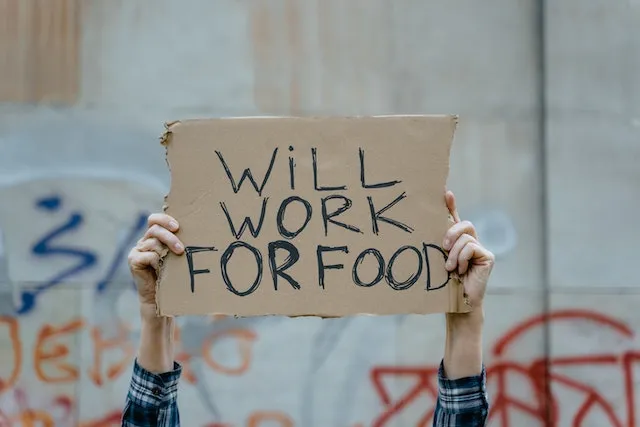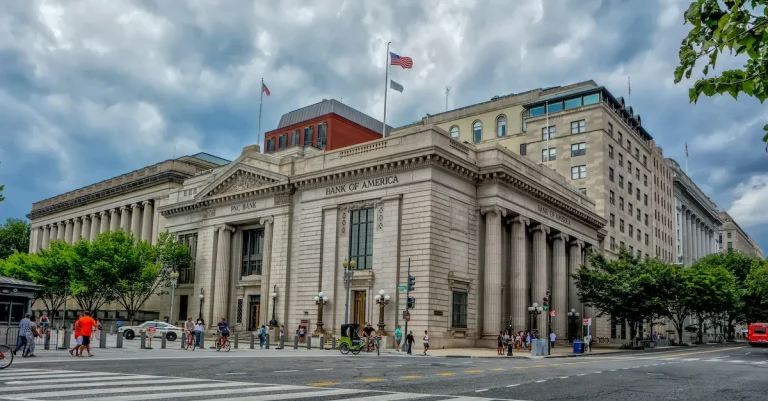San Francisco’S Homelessness Crisis: The Worst Neighborhoods
San Francisco is facing a devastating homelessness crisis, with large encampments and street populations concentrated in certain districts. If you want to avoid the worst of it, here’s a quick answer: The Tenderloin, SoMa, Civic Center and Mid-Market areas have the largest homeless populations due to cheap SROs and shelter proximity.
In this comprehensive 3000 word guide, we will analyze data and local perspectives to identify the San Francisco neighborhoods most impacted by homelessness. We will look at factors like affordability, services and policing that contribute to large homeless concentrations. Whether you live in the city or plan to visit, understanding the scope of the problem in these specific communities can help you stay safe and show compassion.
Understanding San Francisco’s Homelessness Crisis
San Francisco is currently facing a severe homelessness crisis that has garnered national attention. The city’s streets, parks, and shelters are filled with individuals experiencing homelessness, leading to concerns about public health, safety, and the overall well-being of both the homeless population and residents.
To address this issue effectively, it is important to understand the key statistics on San Francisco’s homelessness and the main causes of this crisis.
Key Statistics on SF Homelessness
The statistics surrounding homelessness in San Francisco are alarming. According to a recent report by the San Francisco Department of Homelessness and Supportive Housing, there are over 8,000 individuals experiencing homelessness in the city.
This number represents a 17% increase from the previous year. Additionally, the report highlights that a significant portion of the homeless population consists of families with children, veterans, and individuals suffering from mental health issues.
Did you know? San Francisco has one of the highest rates of unsheltered homelessness in the United States, with more than 60% of the homeless population living on the streets rather than in shelters or transitional housing.
The rising cost of housing in San Francisco is a major contributing factor to the homelessness crisis. The city has one of the highest housing costs in the country, making it increasingly difficult for low-income individuals and families to find affordable housing.
As a result, many are forced to live on the streets or in temporary shelters.
Main Causes of the Crisis
While the high cost of housing plays a significant role in San Francisco’s homelessness crisis, it is not the sole cause. Other factors contributing to the problem include:
- Lack of affordable housing options: The demand for affordable housing far exceeds the supply, leaving many individuals unable to secure stable housing.
- Mental health and substance abuse: A significant portion of the homeless population in San Francisco struggles with mental health issues and substance abuse, making it challenging for them to maintain stable housing.
- Income inequality: The growing wealth gap in San Francisco has led to an increase in homelessness, as many individuals cannot afford the rising costs of living.
- Limited access to social services: The lack of accessible and comprehensive social services for those experiencing homelessness makes it difficult for individuals to break the cycle of homelessness and find permanent housing.
Addressing San Francisco’s homelessness crisis requires a multifaceted approach that includes increasing the availability of affordable housing, expanding mental health and substance abuse treatment options, and strengthening social service programs.
By understanding the key statistics and main causes of the crisis, we can work towards finding sustainable solutions to alleviate homelessness in San Francisco.
How Homelessness is Measured in San Francisco
Understanding the magnitude of homelessness in San Francisco is crucial to addressing the issue effectively. To gather accurate data, the city utilizes various methods and resources to measure and track the homeless population.
Two primary methods used are HUD’s Point-in-Time Counts and the SF Homeless Resource Counts.
HUD’s Point-in-Time Counts
The U.S. Department of Housing and Urban Development (HUD) conducts annual Point-in-Time (PIT) counts to estimate the number of homeless individuals and families on a single night. These counts are conducted in cities across the country, including San Francisco.
The PIT counts provide a snapshot of homelessness by identifying individuals staying in shelters, transitional housing, and those without shelter.
The PIT counts help determine trends and changes in homelessness over time. It enables policymakers and organizations to evaluate the effectiveness of programs and policies aimed at reducing homelessness.
The data collected from PIT counts is essential in securing federal funding and resources to address the issue.
SF Homeless Resource Counts
In addition to the HUD’s PIT counts, San Francisco conducts its own Homeless Resource Counts. This comprehensive effort is a collaboration between the city government, non-profit organizations, and volunteers.
The resource counts provide a more detailed understanding of the homeless population by conducting surveys and interviews with individuals experiencing homelessness.
The SF Homeless Resource Counts take into account individuals who may not be captured in the PIT counts, such as those living in vehicles, encampments, or other hidden locations. This data helps identify specific needs and challenges faced by different subgroups within the homeless population, allowing for targeted interventions and resource allocation.
By combining the data from HUD’s Point-in-Time Counts and SF Homeless Resource Counts, San Francisco can gain a more comprehensive understanding of the homelessness crisis and develop effective strategies to address it.
Neighborhoods with the Largest Homeless Populations
San Francisco has been grappling with a significant homelessness crisis for years, and certain neighborhoods have been hit harder than others. Here are some of the neighborhoods with the largest homeless populations:
Tenderloin
The Tenderloin neighborhood in San Francisco is infamous for its high concentration of homelessness. It is home to numerous shelters and social service agencies that cater to the needs of the homeless population.
Despite ongoing efforts to improve the situation, the Tenderloin continues to face significant challenges in addressing the issue of homelessness.
South of Market (SoMa)
Another neighborhood deeply affected by the homelessness crisis is South of Market, commonly known as SoMa. This area, which encompasses a mix of residential and commercial spaces, has seen a surge in homelessness in recent years.
The increasing cost of living in San Francisco has contributed to the rise in homelessness in SoMa, as many individuals and families struggle to afford stable housing.
Civic Center
The Civic Center neighborhood is located in the heart of San Francisco and is home to several government buildings and cultural institutions. Unfortunately, it is also home to a significant number of homeless individuals.
The proximity to shelters and services in this area attracts those in need, but it also poses challenges as the homeless population often faces issues related to mental health and substance abuse.
Mid-Market
The Mid-Market neighborhood, situated along Market Street, has experienced a surge in homelessness in recent years. This area has undergone significant redevelopment, with new tech companies and luxury apartment buildings moving in.
However, the stark contrast between the newfound wealth and the growing homelessness problem has sparked controversy and debate about the city’s priorities.
It’s important to note that these neighborhoods are not the only ones affected by homelessness in San Francisco. The issue is widespread throughout the city, and efforts are being made to address it on multiple fronts.
Organizations like the San Francisco Coalition on Homelessness and the City’s Department of Homelessness and Supportive Housing are working tirelessly to provide assistance and find long-term solutions for those experiencing homelessness.
Why Homelessness Concentrates in These Areas
San Francisco is facing a severe homelessness crisis, with certain neighborhoods being particularly affected. Several factors contribute to the concentration of homelessness in these areas, including proximity to services, availability of shelter beds, the presence of Single Room Occupancy (SRO) hotels, and affordability.
Proximity to Services
One reason why homelessness tends to concentrate in certain neighborhoods is their proximity to essential services. Homeless individuals often rely on services such as healthcare facilities, food banks, and support organizations.
These neighborhoods may have a higher number of such facilities, making them attractive for those seeking assistance. Additionally, the concentration of services in these areas can create a sense of community and support for homeless individuals.
Availability of Shelter Beds
The availability of shelter beds is another significant factor contributing to the concentration of homelessness in certain neighborhoods. Homeless individuals often seek shelter in designated facilities to protect themselves from the elements and find temporary relief.
Neighborhoods with a higher number of shelter beds tend to attract more homeless individuals as they offer a chance for a safe and secure place to sleep.
Single Room Occupancy (SRO) Hotels
SRO hotels play a crucial role in housing homeless individuals in San Francisco. These establishments provide low-cost accommodations in individual rooms, making them an attractive option for those without stable housing.
Certain neighborhoods have a higher concentration of SRO hotels, making them a magnet for homeless individuals who can find a temporary solution to their housing needs.
Affordability
The affordability of housing also plays a significant role in the concentration of homelessness. San Francisco is known for its high cost of living, with skyrocketing rent prices and a limited supply of affordable housing.
This creates a situation where individuals with limited financial means are more likely to become homeless or struggle to find stable housing. Neighborhoods with lower housing costs or a higher number of low-income housing options may attract those who cannot afford to live in other parts of the city.
Dangers and Health Risks
Living in neighborhoods with high levels of homelessness can expose residents to various dangers and health risks. These neighborhoods often experience higher crime rates, sanitation issues, and challenges related to mental health and addiction.
Crime
The presence of homelessness in certain neighborhoods can contribute to an increase in criminal activities. Individuals experiencing homelessness may resort to theft, drug-related offenses, or other illegal activities to survive or support their addictions.
This can create an unsafe environment for both residents and businesses in the area. According to a study conducted by the San Francisco Police Department, neighborhoods with high concentrations of homelessness tend to have higher crime rates compared to other areas of the city.
Sanitation Issues
The lack of proper sanitation facilities is a significant challenge in neighborhoods heavily affected by homelessness. Limited access to clean restrooms and shower facilities can lead to unsanitary conditions, which in turn can pose serious health risks.
The accumulation of trash, human waste, and discarded needles can contribute to the spread of diseases and attract pests such as rats and insects. The San Francisco Department of Public Health has reported outbreaks of diseases such as Hepatitis A in areas with a high number of homeless individuals.
Mental Health and Addiction
Many individuals experiencing homelessness struggle with mental health issues and addiction. The lack of access to proper healthcare and support services exacerbates these challenges, making it difficult for them to break the cycle of homelessness.
This can have a direct impact on the safety and well-being of both homeless individuals and the residents in the surrounding neighborhoods. It is crucial for communities to address these underlying issues and provide adequate resources for mental health and addiction treatment.
Addressing the dangers and health risks associated with homelessness requires a comprehensive approach that combines efforts from local authorities, community organizations, and residents. By providing affordable housing, access to healthcare, and supportive services, we can work towards creating safer and healthier neighborhoods for everyone.
Conclusion
In conclusion, homelessness has reached crisis levels in San Francisco, with many encampments and street populations clustering in neighborhoods like the Tenderloin, SoMa, Civic Center and Mid-Market. Affordable housing scarcity, shelter locations and single room occupancy hotels drive this concentration.
While the issue is complex, understanding which areas face the greatest challenges can help residents and visitors avoid safety risks and have compassion for those suffering homelessness. The city must continue to address root causes and increase temporary and permanent affordable housing options to help those in need.








